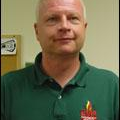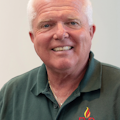During the early 1970s, mini-pumper fire apparatus became the standard bearer in many fire departments throughout the country. The advantages of these vehicles were clear: they were smaller, more maneuverable and cost significantly less than a full-size engine and in many cases could handle most incidents, saving wear and tear on their larger counterparts. Departments from Syracuse, NY, to Arroyo Grande, CA, adopted mini-pumpers into their firefighting operations and as a result many new variations on the mini-pumper theme have been developed over the past 40 years.
By the later part of the 1980s, the mini-pumper craze had died off for several reasons. The apparatus had inherent limitations with 200 to 250 gallons of water as well as compartment space and available axle capacities to prevent overloaded units. Safety considerations of having only two personnel responding to an incident were also put into question and soon most mini-pumpers were placed in reserve status or relegated to use for brushfire and off-road incidents. At the same time that these smaller units were falling out of favor, a trend began to develop to design larger, multi-purpose engine company apparatus.
While four-door-cab apparatus would not be required by the National Fire Protection Association (NFPA) 1901 Standard until 1991, many departments were already buying these units to enhance safety for all personnel. Manufacturers quickly reacted to these purchasing preferences and began to introduce longer cabs with seating for up to 10 personnel, raised roofs with front and side windows, and transverse compartments that could be provided under the forward-facing crew seats. All of this resulted in longer and heavier apparatus with wheelbases often over 210 inches and overall vehicle lengths approaching 34 feet. The modern-day version of these units has evolved into the rescue engine, which carries engine and rescue company equipment and is designed to operate at any type of incident.
Many manufacturers in the future will have to rethink this marketing strategy because of the work being done on the national firefighter seatbelt project and the anthropometric study that we have embarked on. Some interesting information has been uncovered, as it relates to these cabs: four average-sized 2010 firefighters in bunker gear with their seatbelts on will simply not fit across the back of most eight- and 10-person cabs. As it relates to raised cab roofs along with adding cost, height and weight, there are other concerns. First, with the exception of a paramedic engine, the only reason that a large majority of fire departments buy raised-roof cabs is to allow room for firefighters to stand up in the apparatus and get dressed while the vehicle is in motion, which is against NFPA standards and common sense. Also, if you are buying an aerial device, the raised roof offers a severe restriction as it relates to "scrub area," that part of a building that can be touched by the tip of an aerial ladder or the basket of a tower ladder. As stated for a long time in this series, bigger is not always better.
Much like the mini-pumper of old, some departments have now come to the realization that do-everything engine apparatus do not function as well as expected. One of the most often-heard comments regarding combination engine apparatus goes something like: "The unit carries everything that we initially wanted to operate with, but in the end, the rig is neither a good rescue nor an easy engine to work from." This does not mean that there is not a place for the rescue engine in the fire service, but rather your department should carefully consider its operations and the mission of the apparatus before setting off to purchase a combination engine for the sake of following a trend.
Meeting Real Needs
There is just beginning to be a trend to coming full circle to the realization that smaller and shorter engine apparatus can alleviate some of the oversize problems presented by combination units while providing a good accountability of them on the fireground. Short-wheelbase pumpers can provide excellent service due to increased maneuverability while carrying sufficient attack lines, supply hose, tools and equipment in a safe and secure manner. There is probably no reason to have a raised-roof cab with seating for 10 personnel if your normal staffing is four and on a good day the engine may ride out with five or six personnel in the cab.
Several departments have successfully designed and are operating shorter, more compact engine apparatus with positive results. Engine 1 of the Bedford, VA, Fire Department is assigned a 2007 Seagrave Marauder II pumper equipped with a 1,500-gpm pump with an L-shape 750-gallon water tank. This engine has a 182-inch wheelbase with an overall length of just under 30 feet. This compact engine carries six pre-connected attack lines, together with 1,200 feet of five-inch supply line. The ground ladders were raised slightly to allow room to store two standpipe packs above the right side body compartments. The rear step was cut back and angled to provide additional swing clearance when maneuvering in tight areas. The first-due area in Bedford ranges from narrow streets in the downtown built-up areas to a large rural area beyond hydrant protection. For this reason, the department sought to design a short-wheelbase engine with seating for six personnel to complement its other front-line units, including two engines, a tractor-drawn aerial ladder and a well-equipped, non-walk-in rescue squad.
One of the ongoing debates with engine apparatus design centers on the best place to locate pre-connected attack lines. The front bumper, crosslays and rear hosebed each has its place, but it is most important that you consider your department's standard operations before deciding on one of these locations. For example, if your department operates with a ladder company, then this unit should be given a priority position in front of the building. Also, narrow streets with parking on either side can often make crosslay hosebeds more difficult to stretch from if they are the only option on the fireground.
The Bay District Fire Department in St. Mary's County, MD, operates from two stations and annually responds to more than 2,100 alarms. The department's fleet includes two engines, two engine tankers and two ladder trucks, including a tractor-drawn aerial designated Truck 3. Engine 32 is a 2007 American LaFrance Eagle pumper equipped with a 1,500-gpm pump and a 650-gallon water tank. This unit has six pre-connected attack lines, including two front-bumper lines, each supplied by a 2½-inch discharge, together with four rear-body 2½-inch discharges. The attack lines range from 150 to 400 feet, and there are supply-line hosebeds for three- and five-inch hose. This engine has seating for six personnel and is built on a 170-inch wheelbase with an overall length of 29 feet, nine inches.
In Prince George's County, MD, the Seat Pleasant Fire Company annually responds to more than 8,400 incidents, operating with two engines, a rescue squad and an ambulance in a heavily populated urban area. The company recently placed a 2009 Seagrave Marauder II 1,500-gpm pumper in service as Engine 82. This unit is built on a 165½-inch wheelbase with a very short overall length of 28 feet, eight inches. Engine 82 is equipped with both front and rear suctions, a front trash line and four pre-connected attack lines in the rear hosebed. Keeping the pumper short and maneuverable with an L-shaped 500-gallon water tank lets this engine operate in tight locations and still provide multiple attack lines with enclosed seating for six personnel.
Size does matter, especially when packaging all of the components and equipment on an engine apparatus. Whether it's the type of streets and parking conditions in your first-due area or maybe even the fire station itself, the tendency is to make the apparatus as large as possible and in many situations the department is now stuck with a big rig that doesn't do anything particularly well.
The Fire and Emergency Services Department at the Marine Corps Base in Quantico, VA, operates from three fire stations to protect the assets at this location. The department recently placed into service Engine 531, a 2009 Pierce Impel pumper built on a 187½-inch wheelbase. This unit is equipped with a 1,500-gpm pump, 750-gallon water tank and 50 gallon foam tank with a Husky 12 foam system. Both front and rear five-inch suction inlets are provided together with a front trash line and two crosslay attack lines. The rear hosebed is equipped with three pre-connected attack lines and 800 feet of four-inch supply line. High side-body compartments are provided on each side together with a hydraulic ladder rack on the left side of the apparatus. With an overall length of 32 feet, 10 inches, Engine 531 packs a lot of firepower in a short, maneuverable apparatus.
A study of fire apparatus history will show that while some concepts are readily adopted and become standard on just about all units, others become more of a fad and at some point are dismissed as being impractical or do not provide the desired result. It seems like the mini-pumpers of today have many more capabilities than their predecessors and are capable of developing adequate water supplies and fire flows to safely mitigate most incidents. Apparatus committees should concentrate on the mission of the apparatus and always keep safe operating procedures in mind when setting out to determine your next engine company unit.
About the Author

Tom Shand
TOM SHAND, who is a Firehouse contributing editor, is a 36-year veteran of the fire service. He works with Michael Wilbur at Emergency Vehicle Response, consulting on a variety of fire apparatus and fire department master-planning issues. Shand is a member of the Firehouse Hall of Fame.
Michael Wilbur
MICHAEL WILBUR, who is a Firehouse contributing editor, retired as a lieutenant in FDNY, where he was last assigned to Ladder Company 27 in the Bronx. He has served on FDNY's Apparatus Purchasing Committee and consults on a variety of apparatus-related issues around the country. Wilbur is a member of the Firehouse Hall of Fame. For further information, access his website at www.emergencyvehicleresponse.com.
